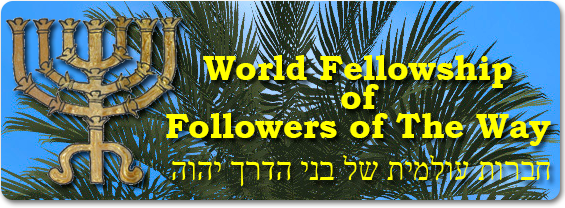Talmidi Library
The Bible, Commentaries & Sermons
The Triennial Torah Reading Cycle
Introduction
In modern Rabbinic Judaism, the five books of the Torah are read in one year. This is because Rabbinic Judaism reads the Torah according to ancient Babylonian Jewish custom. However, the custom in Galilee and Judea was to read the Torah in a cycle of three years. In the early centuries after the destruction of the Temple, the rabbis in Babylon were politically stronger than the disenfranchised Jewish community in the Land of Israel. As a result, their custom prevailed over that of Jews who remained in the Holy Land.
Reading the Torah in one year results in very long readings that few people can hold attention to, and as a result, any sermon afterwards can only give a cursory exposition of the text – if one is given at all. The Reform movement has attempted to get round this problem by reading only a third of each reading; in the first year they read the first third of each portion, in the second year they read the second third, and the third year they read the third. Its drawback is that it results in a disjointed flow of narrative from week to week.
However, reading the Torah in a three-year cycle gives a shorter reading that people can absorb much more easily. It also provides the sermon-giver with the opportunity to go into an exposition of the text in greater detail. It is also interesting to note that the current divisions into chapters that we have now in the bible very closely correspond to the weekly portions of the triennial cycle.
The three-year cycle also enables certain readings to be read at appropriate times of the year – for example, the story of the Exodus and of the Israelites leaving Egypt is read around Passover in the second year. This is because, when the Torah edited into its final form in the 6th century BCE, the chapters were so arranged that they the themes of passages would be relevant to holy days and festivals when they came round. In other words, the Torah as we have it now, was specifically designed to be read in three years, not one.
Within the Talmidi community, the custom of Torah reading differs. Massorites, Liberal Talmidis and Yeshuinists read the Torah in the ancient three-year cycle of Eretz Israel; Conservative Ebionites and Beth Emet read Torah according to the Babylonian one-year cycle.
Below is a table of the readings for each year. Sidra’ot in bold are slightly different modern portions to the ancient ones (usually to tidy the beginning and end verses of the readings thematically). Where the original haftarah is unknown to historians, I have chosen one. Also, often only the opening verse of a haftarah was recorded; the final verse was not. Therefore, for such haftarot I lengthened the reading, being mindful of the theme of the Torah portion.
The verse numbers quoted below follow the Jewish canon; the Christian verse numbers are sometimes different.
Amended Verse numbers
The sole source of the list of readings in the triennial cycle is the Jewish Encyclopedia. However, early on in our use of the list, we noticed that some verses listed in the haftarot did not exist. The early sidra’ot quoted for the Book of Numbers did not make much sense either (one portion is given as being only 3 verses)!
Since 1998, as a result of trial and error over the years, Torah portions have been amended here and there, in order to produce portions that make distinct narrative units, and which accord better with the actual divisions in the Torah scrolls themselves.
Verses below which are quoted in bold are the amended, current portions we follow; the verses quoted in the Jewish Encyclopedia are given beneath those verses in italics.
